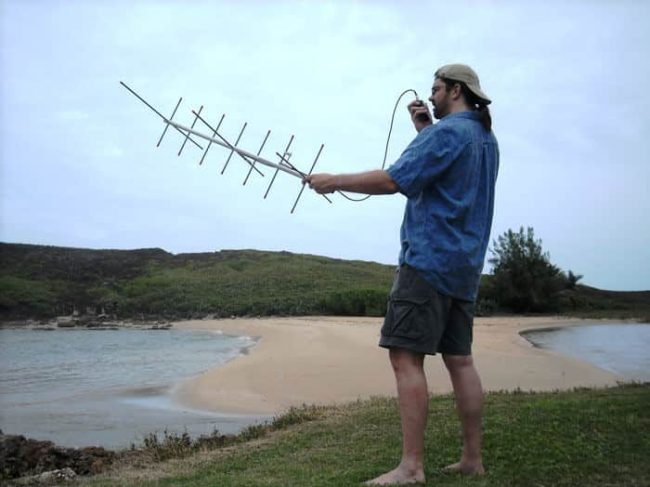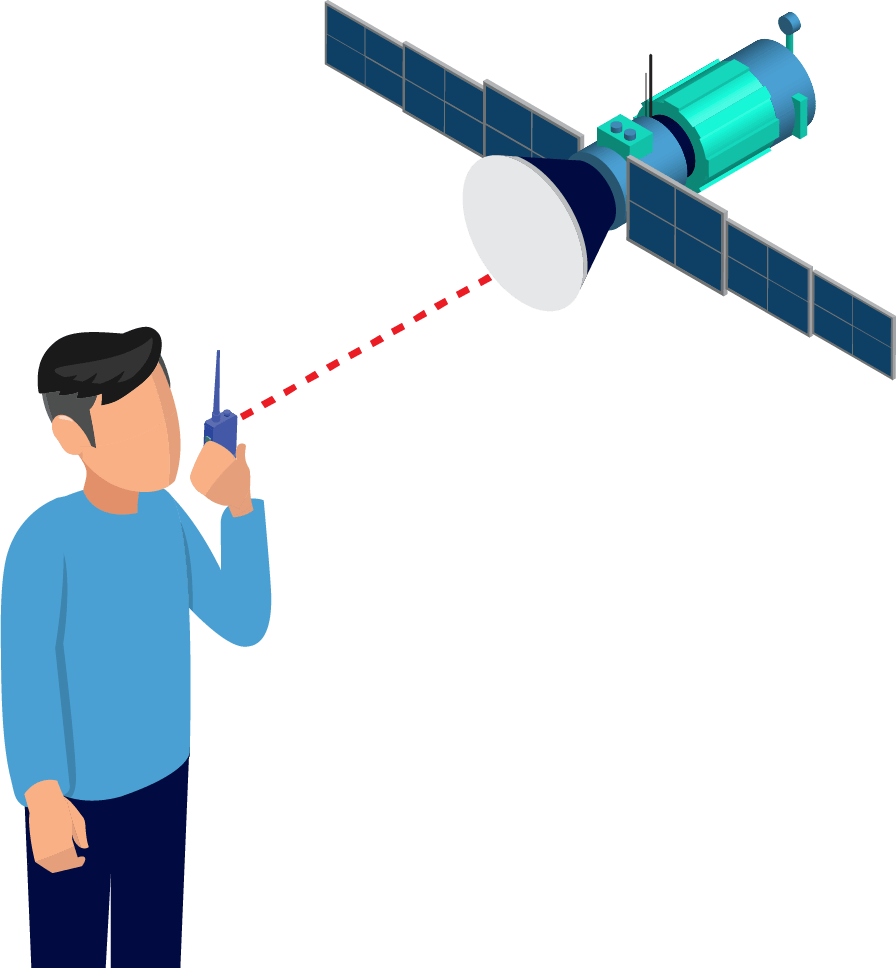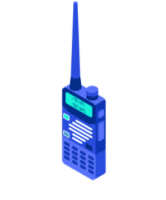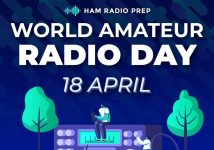When new hams get their licenses, they generally purchase a handheld transceiver (HT) and get on the local repeaters. This is fun for a while, but don’t get stuck just talking on the repeaters. Ham radio has much more to offer. For example, one of the other cool things you can do with a Technician Class license is work the “birds,” otherwise known as amateur radio satellites.
Did you know that amateur radio operators have been sending satellites into space since the early 1960s? The Orbiting Satellite Carrying Amateur Radio, or OSCAR I for short, was successfully launched into a low Earth orbit on December 12, 1961. It carried a small beacon transmitter whose purpose was to study radio propagation through the ionosphere. It only lasted a few weeks before it dropped into Earth’s atmosphere and burned up, but it secured amateur radio’s place in space.
Now, there are dozens of amateur radio satellites in space, and as a Technician you can make contacts by bouncing your signals off of them. Think of them as repeaters in space.
In this guide:
Types of Ham Radio Satellites
There are two basic types of satellites: FM satellites and linear transponders. The FM satellites are basically cross-band repeaters. You might, for example, transmit on a frequency, called the uplink, in the 2 m band and receive on a frequency, called the downlink, in the 70 cm band. A satellite whose uplink frequency is in the 2 m and downlink frequency in the 70 cm band is said to be operating in mode V/U (V for VHF, U for UHF). Some satellites have an uplink frequency in the 70 cm band and a downlink frequency in the 2 m band. These satellites are said to be operating in mode U/V.
The International Space Station (ISS) is now equipped with a mode V/U repeater. Its uplink frequency is 145.990 MHz, and its downlink frequency is 437.800 MHz. It requires a CTCSS tone of 67.0 Hz.
Ham Radio Satellite Antennas
One of the cool things about working the FM satellites is that you don’t need a lot of sophisticated equipment. A couple of HTs—or an HT capable of duplex operation—and a handheld, dual-band Yagi, as shown in the figure below, will do.

One of the most widely-used antennas for satellite work is the Arrow II Portable. It consists of two Yagi antennas—a three-element 2 m Yagi and a seven-element Yagi—connected to a common boom. The two antennas are at right angles to one another. You can purchase this antenna with a duplexer that lets you connect it to a single radio or without the duplexer, which lets you connect it to two separate radios.
Finding a Satellite
If you’re a do-it-yourself type, these antennas are not difficult to build. A “cheap yagi” antenna lfor satellite work can be built using a wooden boom and stiff copper wire or welding rod. You can build one of these for a fraction of the cost of buying one.
Once you have the gear, you need to be able to find out when the satellites will be in view. Remember, this is all line of sight operation. You can only work the satellites if they are above the horizon. For finding out when satellites will be above the horizon, I like the N2YO.Com website. The amateur radio satellite passes page shows which satellites will be passing above the horizon at your location for next six hours, and provides the uplink and downlink frequencies, and the start and end times with the azimuth and elevation information you need point your antenna at the satellite.

Operating the satellites can be a lot more fun than just talking to the hams on the local repeaters. Aside from making sure that your signal can hit the repeater, there’s no real challenge in that. Working the satellites, on the other hand, can be a lot more engaging. It’s a true test of your operating and technical skills.
Resources
There are many resources that new satellite operators can make use of:
- AMSAT is an educational organization whose mission is to “foster amateur radio’s participation in space research and communication.” They not only develop satellites for amateurs to use, but also provide resources for newcomers to satellite operation. Check out their “For Beginners” page. The 2020 Edition of Getting Started with Amateur Satellites is available for $15.
- Work-Sat.Com. This website is for amateurs who want to get started working the FM voice satellites. It includes a brief tutorial on how to work the FM satellites, a satellite frequency chart, and other information. Joining an associated mailing list—Work-Sat—allows you to interact with other, more experienced satellite operators.
- YouTube. There are many YouTube videos on how to get started working amateur radio satellites.












